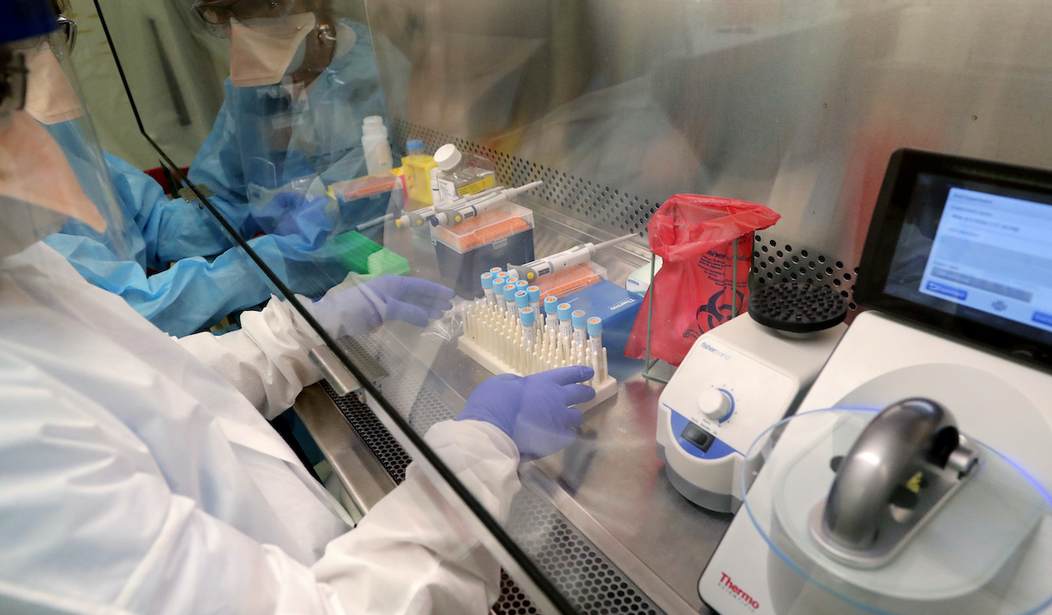Perhaps It’s because I’m a born skeptic, but when it comes to COVID-19, any claims of scientific consensus make me suspicious. This is why a tweet from David Frum struck me as ridiculous. After reading the article, it was even more absurd:
Through COVID epidemic, individual dissenters have challenged scientific consensus on lab escape, off-beat treatments, vaccines. When challenged, they answer, basically: "Well, everybody laughed at the Wright Brothers." https://t.co/3tYkWZDvUb 1/2
— David Frum (@davidfrum) June 28, 2021
The very idea that the scientific community can build consensus around anything in 18 months is absurd. Some portion of it can produce a self-reinforcing institutional narrative. Unfortunately, those narratives do run the risk of being wrong and falling apart. We have already seen this around the lab-leak hypothesis Frum (who has no background in medicine or science) mentions. It went from a conspiracy theory to a subject of debate in the same timeframe. So, it was probably a terrible example for him to use. The dissenters have a strong case.
The Vice article that Frum posted slams the content of an interview Joe Rogan conducted with evolutionary biologist Bret Weinstein and Pierre Kory, an acclaimed intensive care physician. The subtitle alone shows how little research Vice’s Anna Merlan did before writing it:
Even as scientists study a drug used to deworm dogs as a COVID treatment, the loudest people online claim it’s a miracle cure, and that inquiry into it is being suppressed.
William Campbell and Ōmura Satoshi were awarded the Nobel Prize for Physiology or Medicine in 2015 for the discovery and formulation of ivermectin. And it was not for deworming dogs. According to Nature:
The safer and more effective derivative, ivermectin, was subsequently commercialized, entering the veterinary, agricultural and aquaculture markets in 1981. The drug’s potential in human health was confirmed a few years later and it was registered in 1987 and immediately provided free of charge (branded as Mectizan)—‘as much as needed for as long as needed’—with the goal of helping to control Onchocerciasis (also known as River Blindness) among poverty-stricken populations throughout the tropics. Uses of donated ivermectin to tackle other so-called ‘neglected tropical diseases’ soon followed, while commercially available products were introduced for the treatment of other human diseases.
In some populations struck by River Blindness, caused by common and repeated Onchocerciasis infections, it was not unusual for large portions of a village or town to become blind by their 40s. However, the prevention and treatment with ivermectin saved the sight of millions of people. Additionally, this 2017 article notes:
Recent research has confounded the belief, held for most of the past 40 years, that ivermectin was devoid of any antiviral characteristics. Ivermectin has been found to potently inhibit replication of the yellow fever virus, with EC50 values in the sub-nanomolar range. It also inhibits replication in several other flaviviruses, including dengue, Japanese encephalitis and tick-borne encephalitis, probably by targeting non-structural 3 helicase activity. Ivermectin inhibits dengue viruses and interrupts virus replication, bestowing protection against infection with all distinct virus serotypes, and has unexplored potential as a dengue antiviral.
Ivermectin has also been demonstrated to be a potent broad-spectrum specific inhibitor of importin α/β-mediated nuclear transport and demonstrates antiviral activity against several RNA viruses by blocking the nuclear trafficking of viral proteins. It has been shown to have potent antiviral action against HIV-1 and dengue viruses, both of which are dependent on the importin protein superfamily for several key cellular processes.
Keeping people from going blind is how you win the Nobel Prize. Not dog deworming, Vice.
SARS-CoV-2 is also an RNA virus dependent on importing proteins, as demonstrated by the mechanism of ivermectin’s effectiveness in vitro against the virus in an October 2020 study. The decision of frontline physicians like Dr. Kory to prescribe it for COVID-19 was based on positive signals in studies of RNA and other viruses going back to at least 2012, as cited by Nature.
Vice’s Merlan extensively quotes health bureaucrats. She may have been better served by looking at Dr. Fauci’s record on repurposed drugs. It’s not good. He worked actively to prevent the widespread use of Bactrim for AIDS patients suffering from pneumocystis pneumonia (PCP). Once again, doctors relied on the success of the drug in treating PCP in patients with certain cancers that affected T-lymphocytes, the same immune cell impacted by HIV.
Fauci refused to sanction its use in favor of AZT, a drug in development. He claimed the experience was anecdotal, the studies were flawed, and it was not FDA-approved to use. One activist claims Fauci even said it could be harmful. If you don’t know the history of the AZT rollout, you should look it up. Today, the generic form of Bactrim is the only drug listed on the government treatment protocol to treat PCP pneumonia in AIDS patients.
Oddly, during the H1N1 pandemic, the health bureaucracy had no issue recommending existing drugs oseltamivir (oral) and zanamivir (inhaled) within less than a month of the first cases. They even added an investigational drug under certain circumstances. The health bureaucracy repurposed two of the drugs based on the assumption that they would work with a new flu strain. All three were still under patent. And when strains developed that were resistant to oseltamivir, another drug to deal with them was sold under the brand name Tamiflu.
It is also weird that the CDC lists no treatments for dengue, despite the research on ivermectin. There is a vaccine approved for children as young as nine. Before applauding, read about the vaccine rollout in the Philippines. It wasn’t pretty. Until the manufacturer and the agency figured out the vaccine caused antibody-dependent enhancement, causing children who had never had dengue to suffer a severe and sometimes fatal case on their first exposure, the Philippines endured a nightmare.
Merck, the original patent holder for ivermectin, made another odd flex. The company sent out a statement on February 4, 2021, cautioning against the use of the drug in COVID-19, echoing the implication of the NIH that it could be dangerous, but only in COVID-19. Of course, the NIH says the same about hydroxychloroquine. Somehow, drugs given in billions of doses globally with well-known safety profiles could be dangerous, but only in this specific illness. It stretches the bounds of credibility.
Yet, remdesivir got an emergency use authorization based on one profoundly flawed study that showed no reduction in mortality. It might not shock you to know that Merck will receive $1.2 billion for a new drug in development to treat early COVID-19 if the trials are successful. Their drug molnupiravir is proposed to work by interfering with RNA replication by targeting RNA polymerase (RdRp) of SARS-CoV-2. From the October in-vitro study on ivermectin:
The presence of RNA augments the interaction between RdRp and Ivermectin. Thus, RdRp is identified as the most probable target for the in-vitro effective FDA approved drug Ivermectin, which can guide the experiment as well as proliferate the design of more potential therapeutics against SARS-CoV-2.
Draw your own conclusions. These situations are highlighted simply because of the parallels, not to assert ivermectin works or that COVID-19 vaccines are broadly dangerous. Instead, they are pointed out because it takes longer than 18 months to know anything definitively. We can be sure at this point that there is an institutional narrative that requires a large amount of censorship to maintain.
The above situations also could point to some level of institutional capture that dismisses and even suppresses information about existing medications in deference to new medicines. It is undeniable that wealth is created for pharmaceutical companies and shareholders when approval to use a new medication under a patent is granted. These companies are also heavily involved in funding and conducting drug trials, including those done by the NIH:
For example, the New England Journal of Medicine — one of the most prestigious medical journals in the world — published 73 studies of new drugs. Of those studies, a pharmaceutical company funded 60, 50 had drug-company employees among the authors and 37 lead researchers had accepted money from a drug company, according to a review conducted by the Washington Post.
There is no wealth in repurposed generic drugs. However, as the case of Bactrim for PCP demonstrated, they can save lives. Generics should not be ruled out in a pandemic, especially when produced in large quantities to distribute globally and for multiple diseases. This profile makes them readily available and easy to increase production on. We should be demanding that the incentives preventing their study and use get restructured for both cost and safety reasons.
Then you should ask yourself why if a contributor from PJ Media could find all this on the internet in under an hour, journalists in the corporate media and fact-checking organizations cannot. Perhaps the health bureaucracy is not the only institution subject to capture during COVID-19.










Join the conversation as a VIP Member